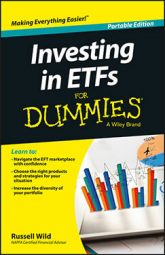Buying and selling an exchange-traded fund (ETF) is just like buying and selling a stock; there really is no difference. Although you can trade in all sorts of ways, the vast majority of trades fall into these categories:
Market order: This is as simple as it gets. You place an order with your broker or online to buy, say, 100 shares of a certain ETF. Your order goes to the stock exchange, and you get the best available price.
Limit order: More exact than a market order, you place an order to buy, say, 100 shares of an ETF at $23 a share. That is the maximum price you will pay. If no sellers are willing to sell at $23 a share, your order will not go through. If you place a limit order to sell at $23, you'll get your sale if someone is willing to pay that price. If not, there will be no sale. You can specify whether an order is good for the day or until canceled (if you don't mind waiting to see if the market moves in your favor).
Stop-loss (or stop) order: Designed to protect you should the price of your ETF or stock take a tumble, a stop-loss order automatically becomes a market order if and when the price falls below a certain point (say, 10 percent below the current price). Stop-loss orders are used to limit investors' exposure to a falling market, but they can (and often do) backfire, especially in very turbulent markets. Proceed with caution.
Short sale: You sell shares of an ETF that you have borrowed from the broker. If the price of the ETF then falls, you can buy replacement shares at a lower price and pocket the difference. If, however, the price rises, you are stuck holding a security that is worth less than its market price, so you pay the difference, which can sometimes be huge.

